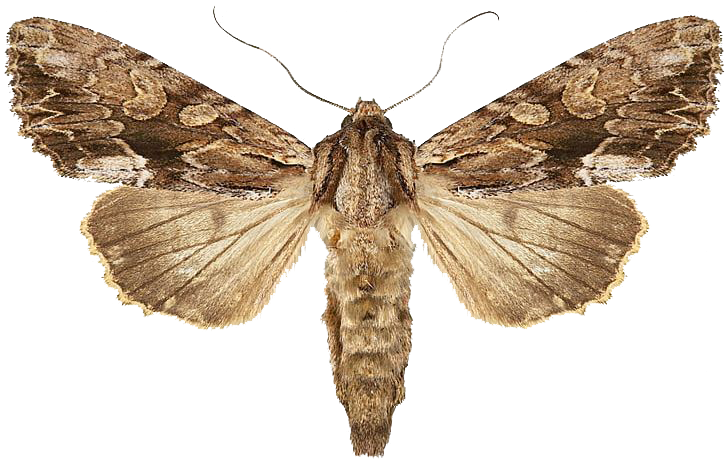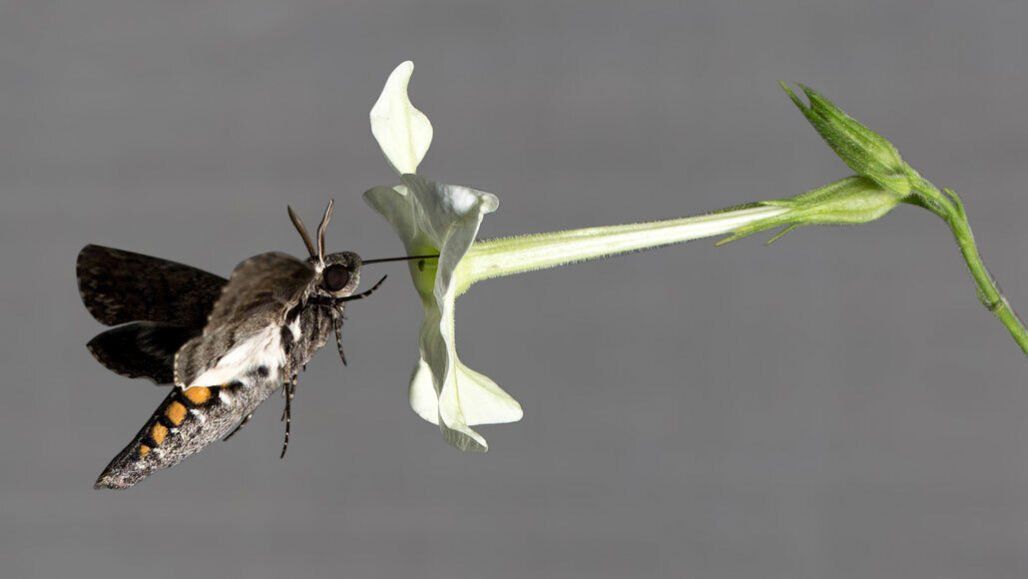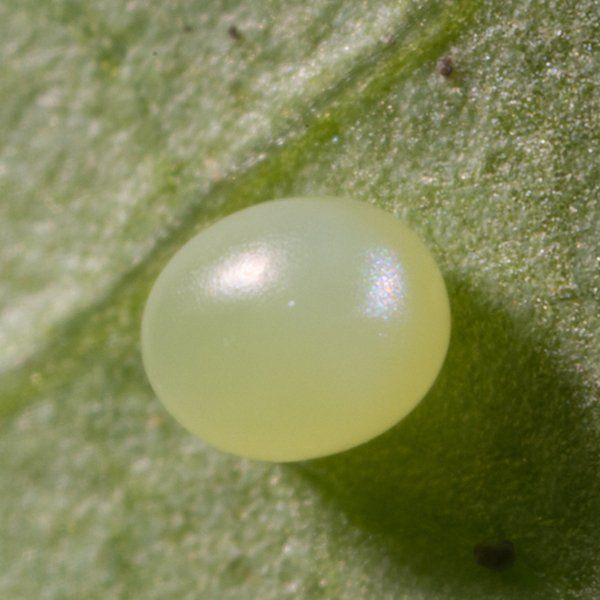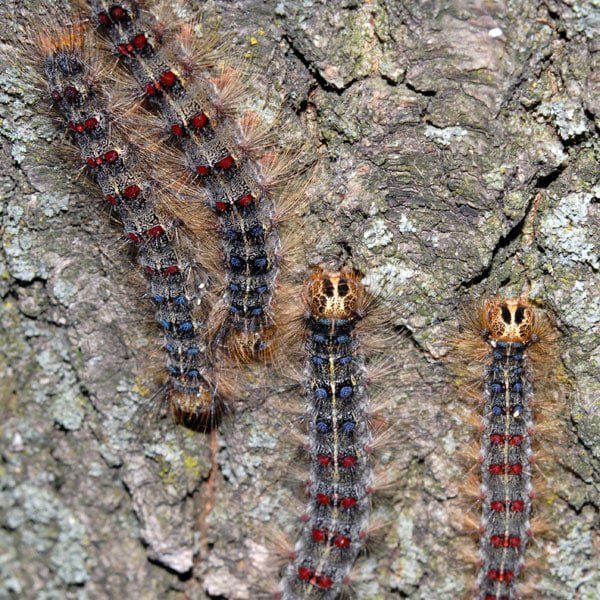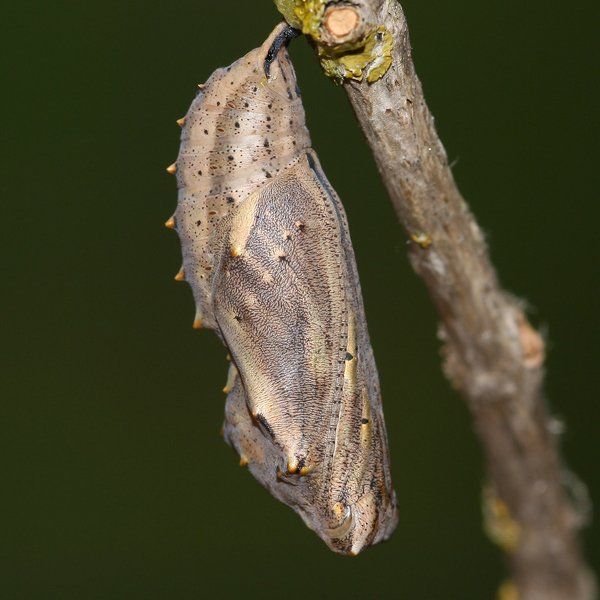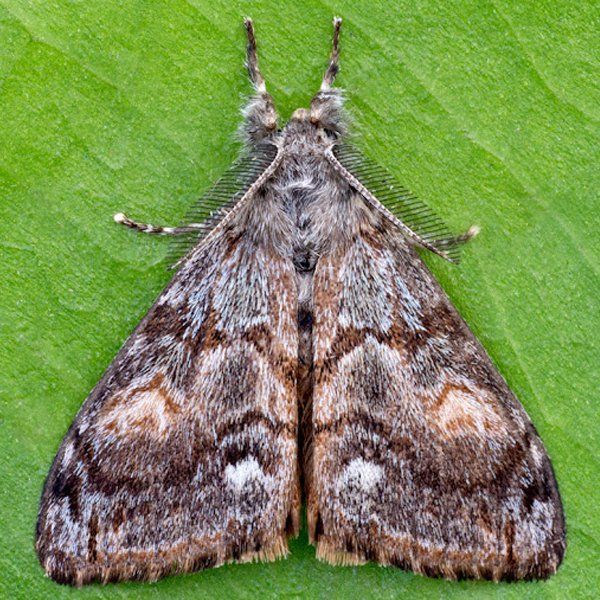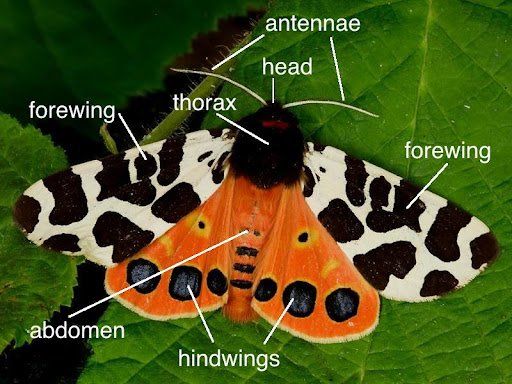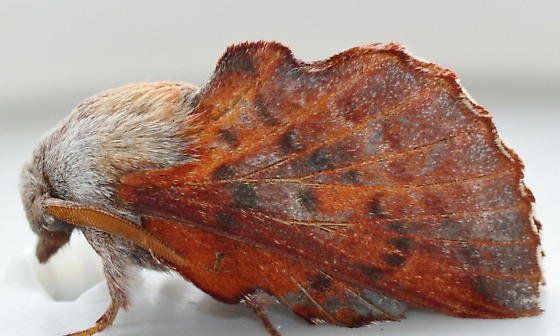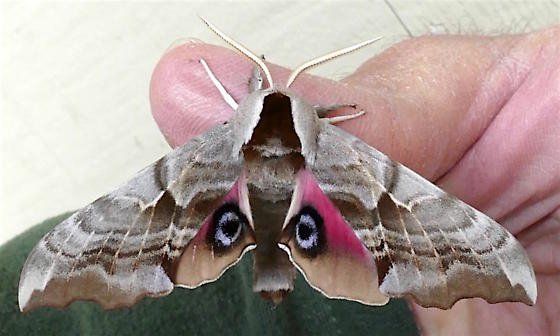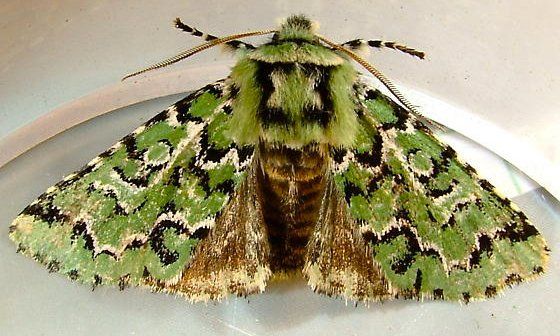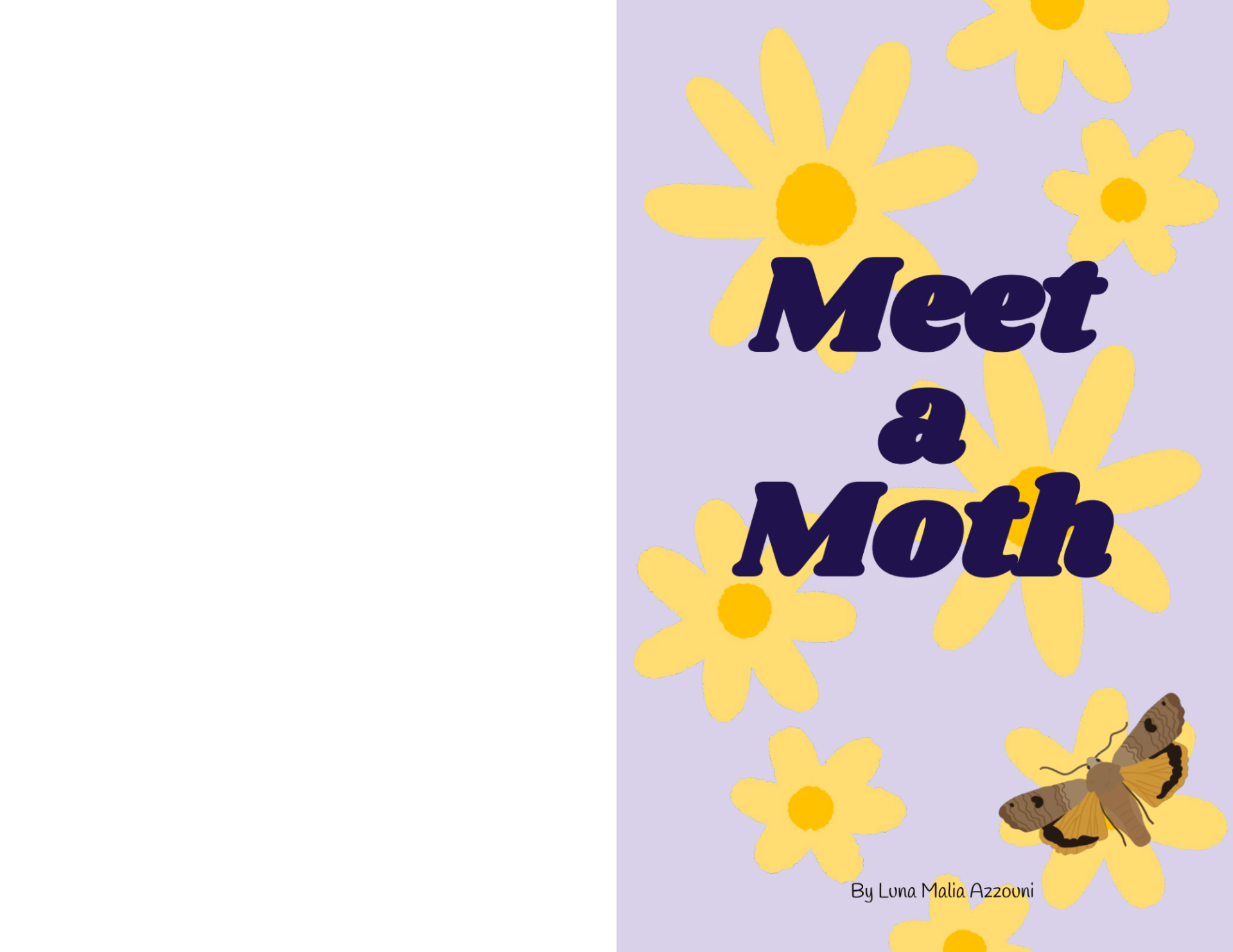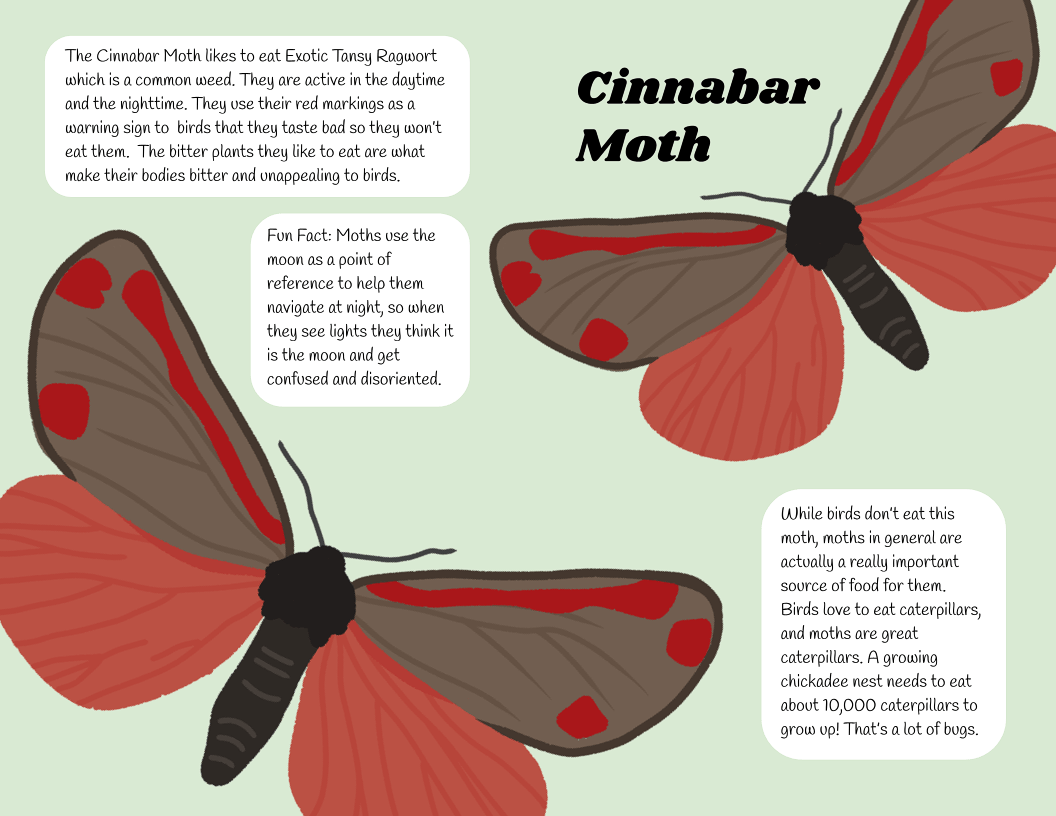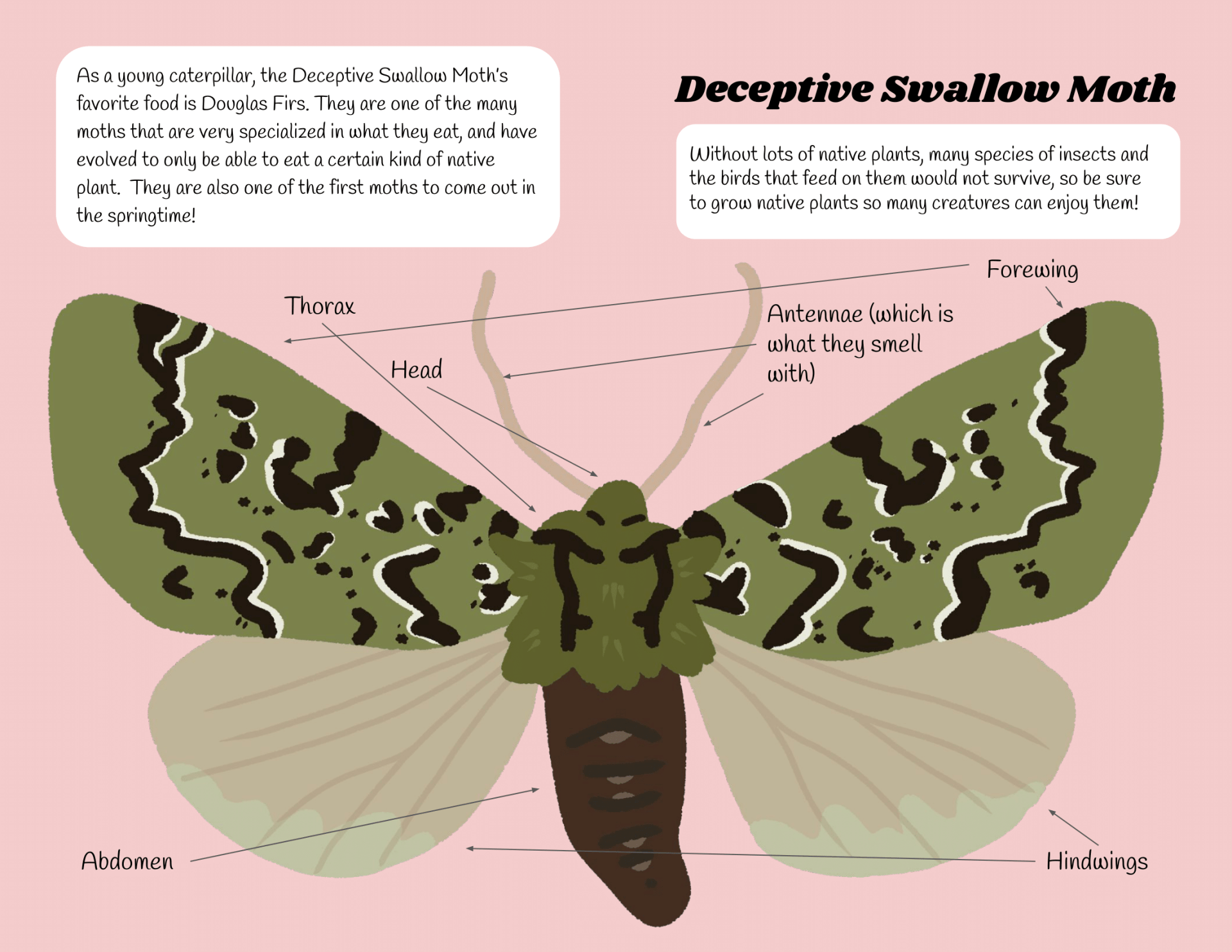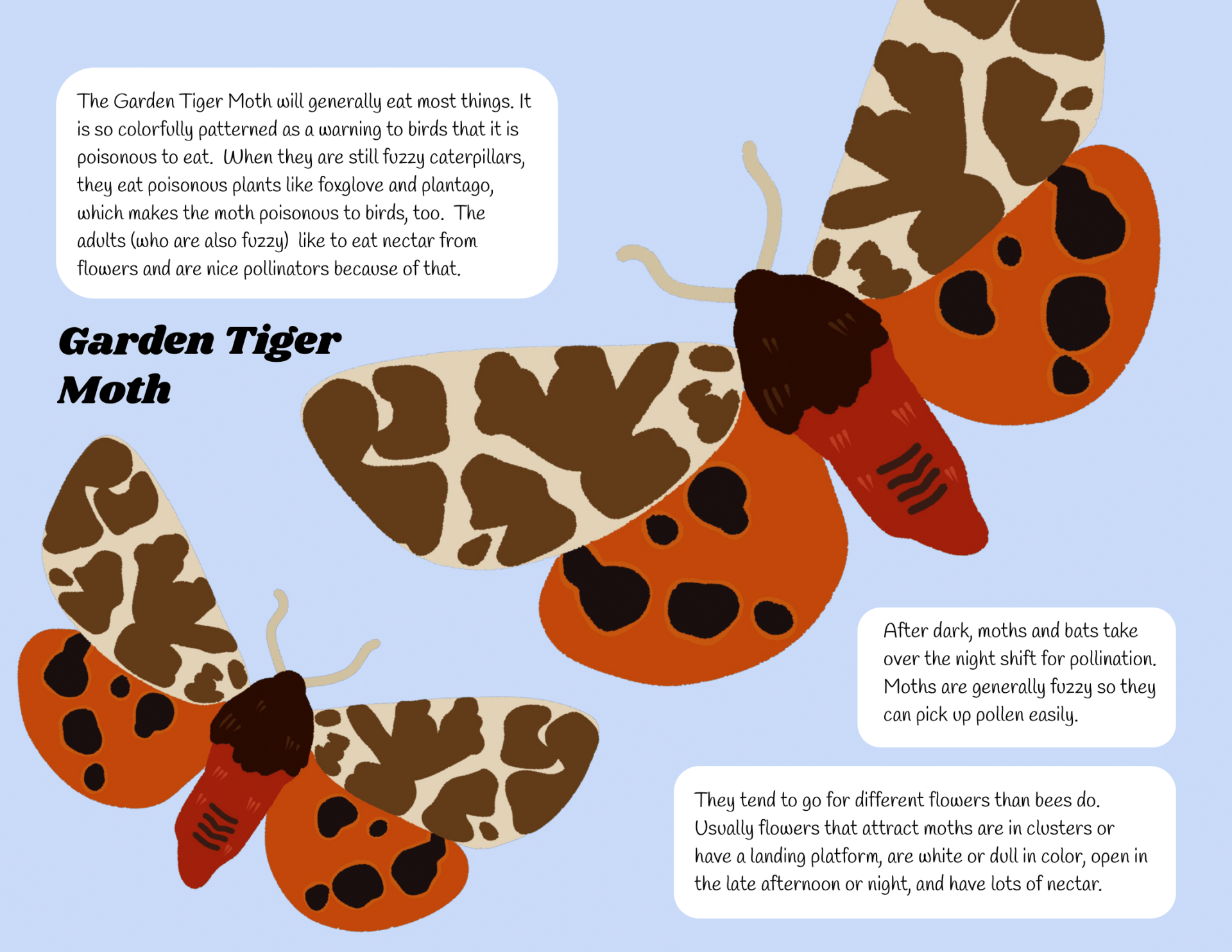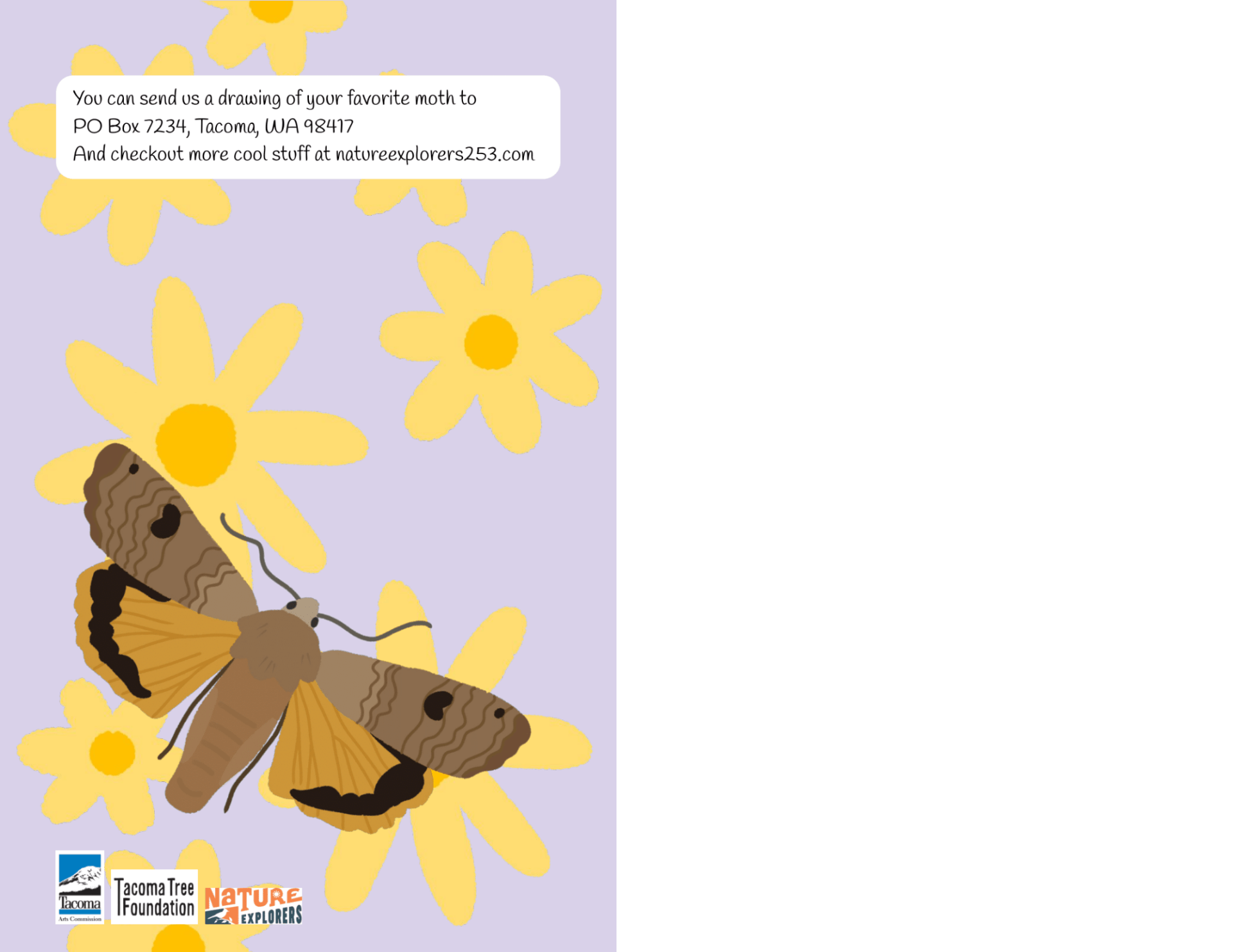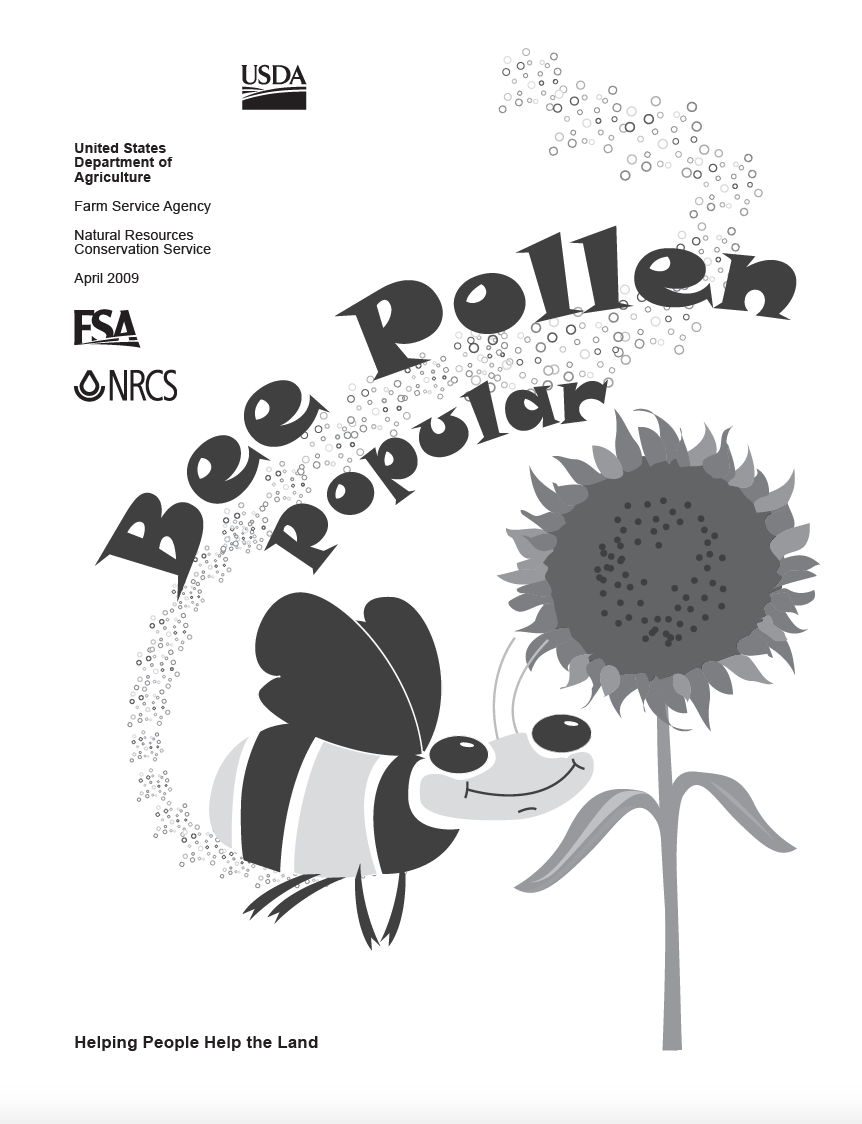A world of activity happens at night, nightlife of flowers, when you're going to bed, moths are coming out and taking over where the bees were working all day to pollinate flowers.
WHY ARE MOTHS SO IMPORTANT?
Without moths, we don’t have birds. Birds love to eat caterpillars, and moths are great caterpillars. A growing chickadee nest needs to eat about 10,000 caterpillars to grow up! That’s a lot of bugs.
Some birds travel thousands of miles to get here for the spring bloom of insects. After travelling for that long and that far they are very hungry. They need to eat about half their body weight in insects to survive and have chicks. Caterpillars are an excellent source of food because they give birds more energy than any other insect.
Some plants protect themselves from being eaten by tasting bad, but some moth caterpillars have figured out how to eat them without a problem. These moth caterpillars are dependent on these specific plants. Many of the plants native to the Pacific Northwest have developed over time to have cooperative relationships with specific moths and moth caterpillars. By creating diverse gardens and protecting diverse ecosystems, we are also supporting all sorts of birds, moths, and other organisms.
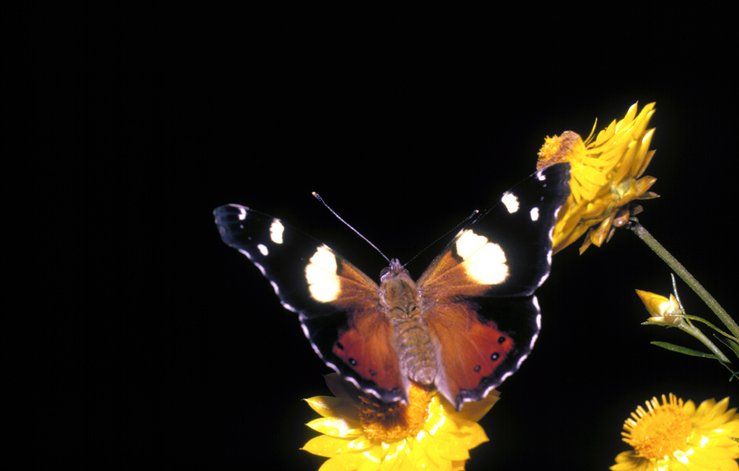
MOTHS AS POLLINATORS
Because moths are so fluffy, pollen can stick to them pretty well. Some flowers are more compatible with moths. Some are nighttime flowers specifically for moths to come visit. Flowers looking to attract moths are usually duller in color because they put out a strong smell only at night to attract moths.
Some moths have longer tongues than bees so when they visit they are able to pollinate flowers that bees can’t. They visit a larger variety of flowers than bees do which means they are supporting greater diversity of plants.
The energy the caterpillars and moths get from the plants they eat is passed on to the bird that eats the caterpillars and moths.
MOTH LIFE CYCLE
Egg Phase
At the beginning of a moth life cycle, there is the egg. Upon choosing an appropriate nest, adult female moths can lay around 40-50 eggs at a time. Sometimes, that number is as high as 100 eggs. These are not laid all at once but over a short span of days.
It usually takes 4-10 days for moth eggs to hatch, though this depends greatly on humidity and temperature levels.
Larva Phase
Once development within the egg is completed, a larva hatches from the egg. We also call the larvae (plural of larva) by another name—caterpillars. Once the growing caterpillar becomes too big for its cuticle, it must shed or molt. The caterpillar continues to eat and molt until it is ready to pupate. Once a suitable site is found, the caterpillar forms a pupal skin becoming what we refer to as a cocoon.
Pupa Phase
Inside the cocoon, most of the caterpillar body breaks down through a process called histolysis. Transformative cells, now become the directors of the body's reconstruction. These cell groups, called histoblasts, initiate the transformation of the deconstructed caterpillar into a viable butterfly or moth.
Adult (Imago) Phase
The adult, also called the imago, emerges from its pupal cuticle with a swollen abdomen and shriveled wings. For the first few hours of its adult life, the butterfly or moth will pump hemolymph into the veins in its wings to expand them.
Once its wings are fully dried and expanded, the adult butterfly or moth can fly in search of a mate.
ANATOMY OF A MOTH
SOME LOCAL MOTHS IN THE PACIFIC NORTHWEST
READ OUR ZINE
Click through our zine below to learn about some of our local moths!
ACTIVITY: DAYTIME AND NIGHTTIME FLOWERS
Go outside during the day with your adult and smell the flowers around.
Go to the same spot at night with your adult and smell the flowers around.
Do you notice anything different? Do you spot any moths around?
DOWNLOAD: USDA POLLINATORS ACTIVITY BOOK
Check out the pollinator activity book that the United States Department of Agriculture put out! It's full of fun activities, including word games and hidden picture images.
THINGS YOU CAN DO TO HELP THE MOTHS
FIND NATIVE PLANTS



